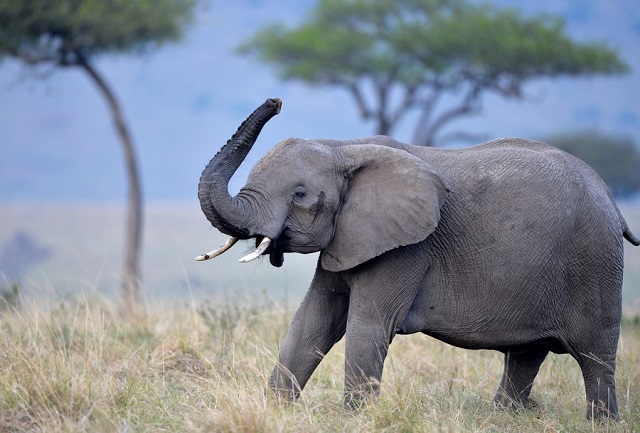Besides poaching, other threats facing the African savanna elephant species in Kenya include human-elephant conflict, climatic shocks like droughts, and shrinking habitats, according to the Kenya Wildlife Service. Human encroachment on elephant dispersal corridors has emerged as a major threat to their survival, necessitating countermeasures including enactment of legislation and greater community engagement.
(Xinhua) -- The World Elephant Day was celebrated Saturday across Kenya, with the country's wildlife agency calling upon key stakeholders to enhance the protection of the iconic land mammal amid multiple threats.
The Kenya Wildlife Service (KWS) said that the country's elephant population has recorded sustained growth, thanks to innovative conservation models.
 |
| An elephant is seen at the Masai Mara National Reserve, Kenya, Aug. 30, 2021. (Xinhua/Dong Jianghui) |
KWS said in a statement issued in Nairobi, the capital of Kenya, that the country's elephant population has been increasing 5 percent annually and currently stands at 36,000, up from a historic low of 16,000 in 1989 when the elephants were massively poached for global trade of ivory.
Celebrated annually on Aug. 12, the World Elephant Day seeks to raise public awareness of a range of threats facing the giant herbivores while rallying key stakeholders to strengthen their protection and sustain tourism and ecosystem balance.
The 2023 event was observed under the theme of "Let us come together to give elephants a safe place to live in," with an emphasis on the critical role of partnership and collaboration to save the iconic mammal from extinction.
Kenya is home to one of the largest populations of African savanna elephant species that roam the country's varied ecosystems including mountainous landscapes and savanna grasslands.
Intertwined with the country's heritage, elephants are crucial to maintaining ecosystem balance besides generating revenue for the exchequer through tourism, KWS observed.
Besides poaching, other threats facing the African savanna elephant species in Kenya include human-elephant conflict, climatic shocks like droughts, and shrinking habitats, according to KWS.
Human encroachment on elephant dispersal corridors has emerged as a major threat to their survival, necessitating countermeasures including enactment of legislation and greater community engagement.
Kenya has invested in technology and reskilling of wildlife rangers to enhance monitoring of elephants in their natural habitats and avert the risk of poaching, KWS said.
In addition, the agency said, the country has domesticated international legal instruments to strengthen the protection of African savanna elephants that have been listed as endangered by the International Union for Conservation of Nature.















Post a Comment